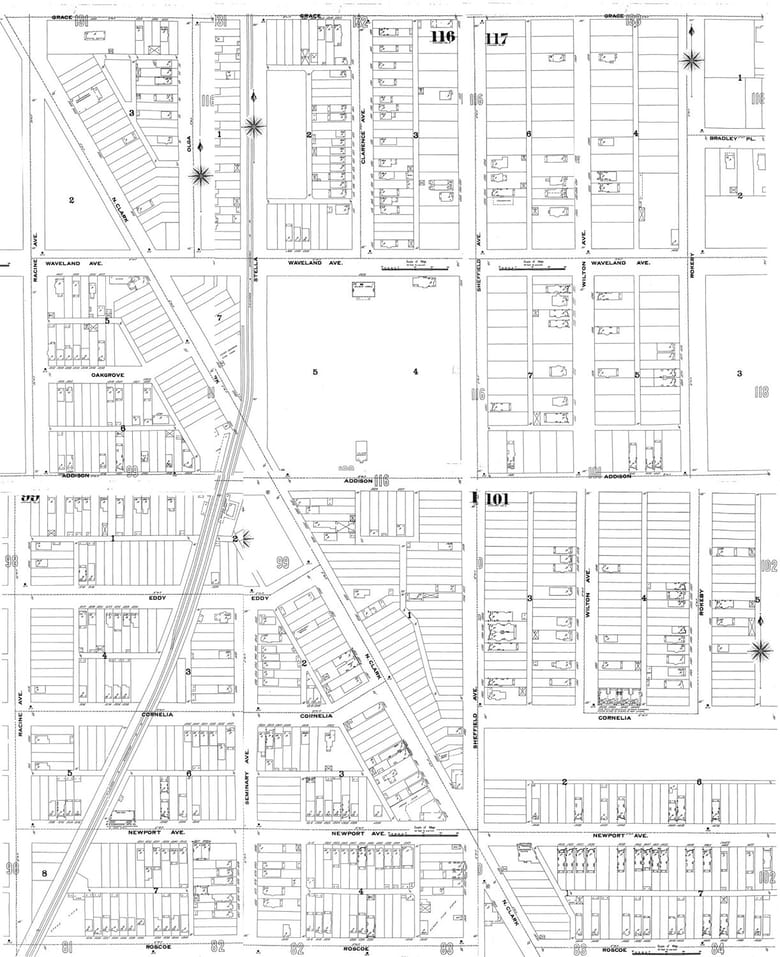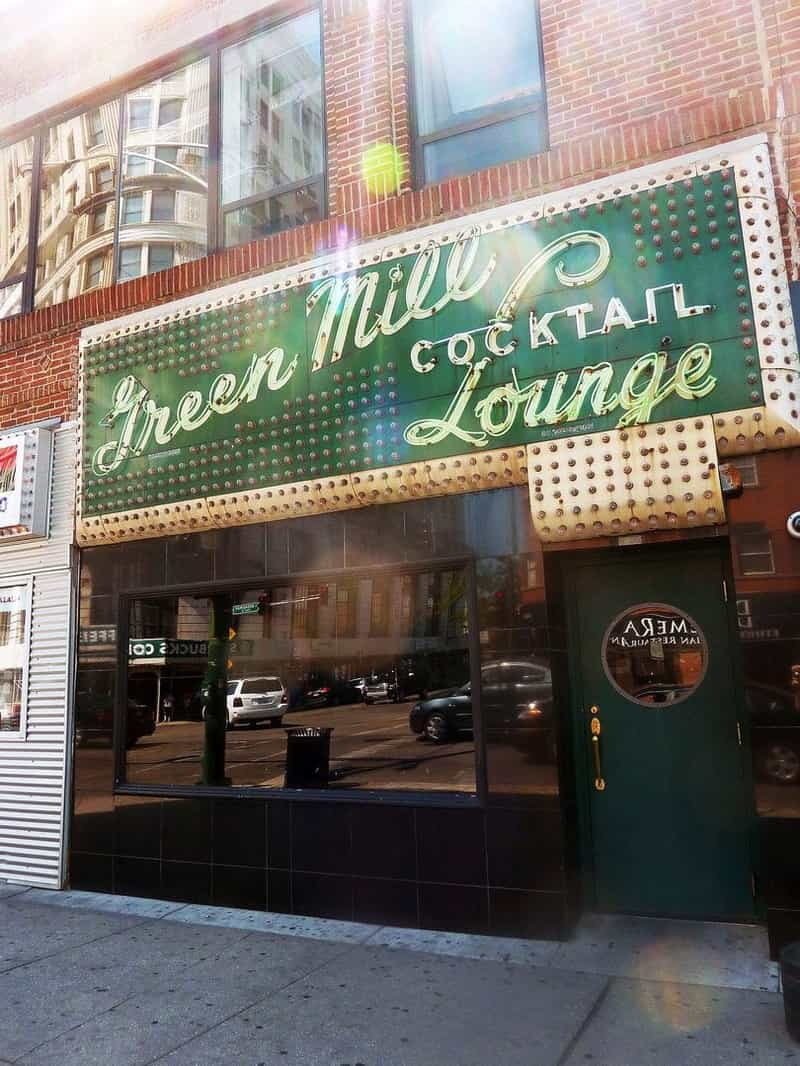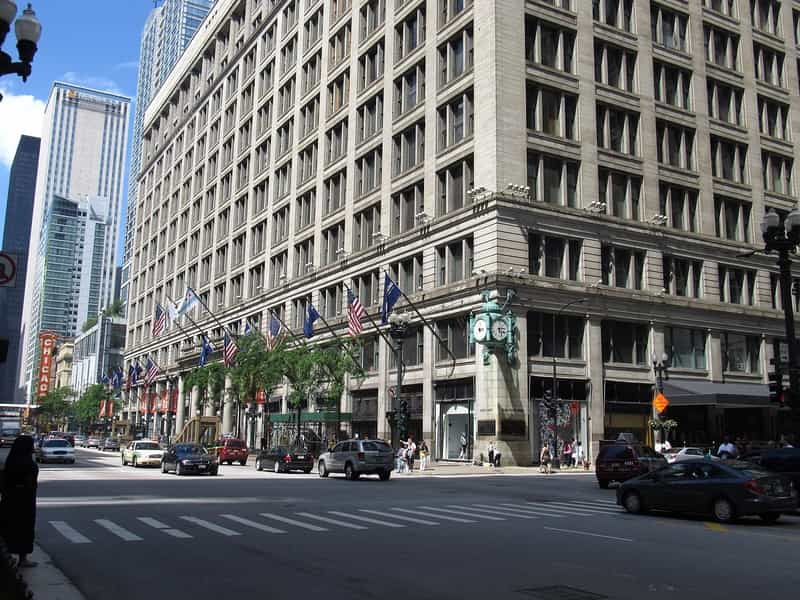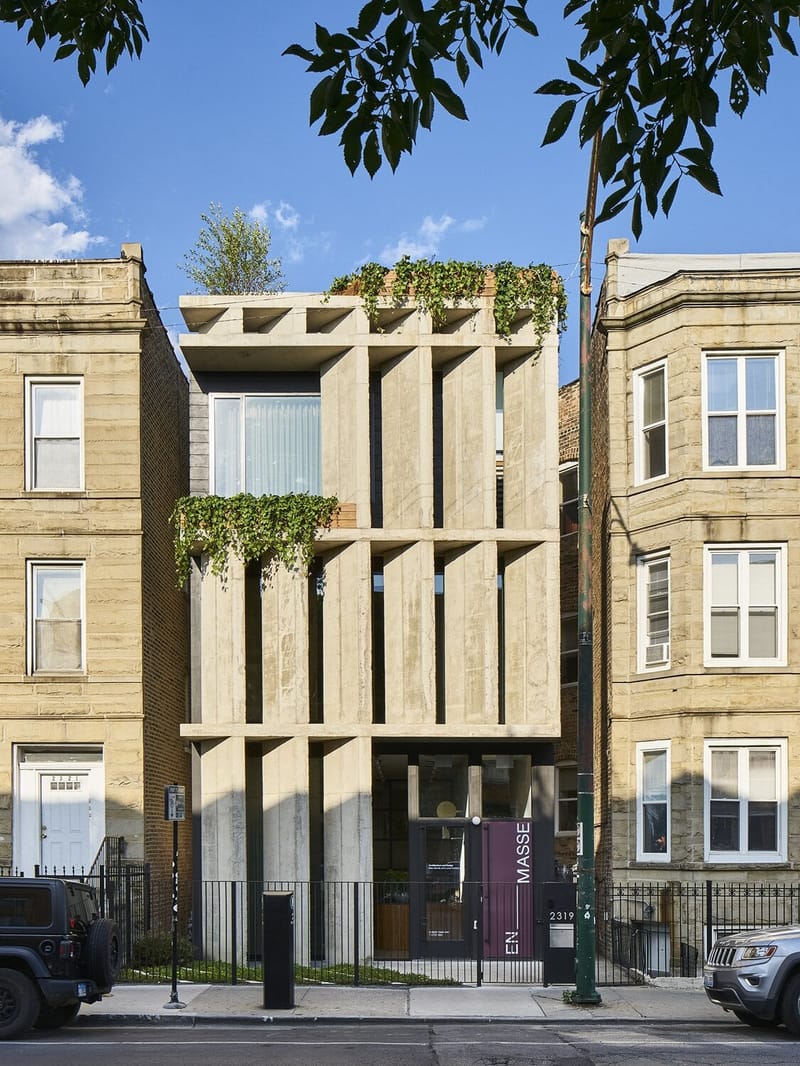Zoning
Photo: 1897 Sanborn Map of Wrigleyville; Image courtesy Sanborn Map Company
Zoning in architecture and urban planning refers to the process of dividing a city or area into zones or districts to regulate land use, building heights, densities, and other aspects of development. Implemented by local governments, zoning laws and ordinances are fundamental tools in urban planning, shaping the physical and social landscapes of cities.
The concept of zoning emerged in the early 20th century as a response to the rapid urbanization and industrialization of cities. In Chicago, zoning played a foundational role in Edward Bennett and Daniel Burnham’s 1909 Plan of Chicago. Over time, zoning has evolved to address a wide variety or urban challenges including climate change, historic preservation, affordable housing, and efficient transportation.
There are several types of zoning, including:
Residential Zoning:
- Regulates land use for housing, specifying types of dwellings (single-family homes, multifamily apartments, townhouses) and density limits.
- May include provisions for accessory dwelling units (ADUs), home-based businesses, and special housing types such as senior living facilities.
Commercial Zoning:
- Governs areas designated for business activities, including retail stores, offices, restaurants, and entertainment venues.
- Establishes guidelines for building size, height, signage, parking requirements, and hours of operation.
Industrial Zoning:
- Applies to areas intended for manufacturing, warehousing, distribution, and other industrial uses.
- Regulates aspects such as noise, emissions, hazardous materials, and proximity to residential areas to minimize environmental and social impacts.
Agricultural Zoning:
- Preserves land for farming, forestry, and other agricultural activities.
- Controls non-agricultural development to maintain rural character and protect agricultural productivity.
Mixed-Use Zoning:
- Encourages a combination of residential, commercial, and sometimes industrial uses within a single development or area.
- Promotes walkability, reduces dependence on automobiles, and encourages vibrant, diverse communities.
Special Purpose Zoning:
- Includes zones for specific functions such as parks and recreation, institutional uses (schools, hospitals), and conservation areas.
- May also encompass overlay zones, which apply additional regulations to address unique local issues, such as historic preservation or floodplain management.
Zoning has both benefits and challenges. While it can help provide orderly development of a city, protect property values, and support sustainable development, it also may hinder design, inadvertently contribute to social and economic inequality, and be complex, confusing, and time-consuming. Zoning requires careful balance and continuous adaptation to address emerging challenges and opportunities in urban development.























